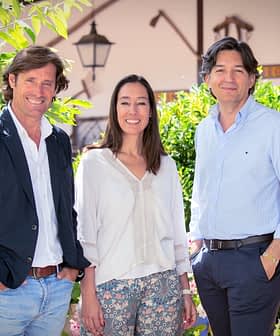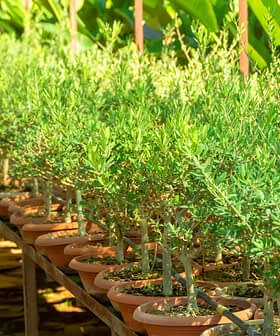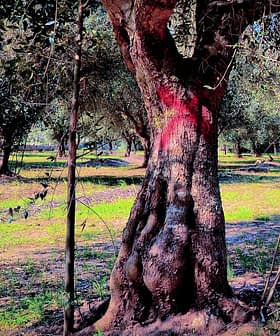Acclaimed Calabrian Producer Shares Insights on Blending, Organic Farming and Oleotourism
The producer behind Enotre discusses the challenges and opportunities for olive growers in Italy’s second-largest olive oil-producing region.
 Pietro Pollizzi
Pietro Pollizzi Pietro Pollizzi, the owner of Enotre, firmly believes that blends convey the best characteristics of extra virgin olive oil.
The Calabrian producer was backed up in his beliefs after his Deciso brand, a medium-intensity organic blend, earned a Gold Award at the 2023 NYIOOC World Olive Oil Competition.
Some truly believe that having an organic orchard means not doing anything to the grove. On the contrary, it means putting in place practices that are compatible with nature.
“A good blend will always be richer than a monocultivar extra virgin olive oil as it is the bearer of a richer organoleptic profile,” he told Olive Oil Times.
At the 2023 edition of the world’s largest olive oil quality competition, blends took center stage, earning more than 300 of the 747 total awards at the contest.
See Also:Producer Profiles“It is harder and harder to produce blends directly from the field,” Pollizzi said about the practice of harvesting and transforming olives from different cultivars simultaneously.
“It is difficult to explain to the customers that nature changes year after year, so a blend in one season might have some different characteristics from the blend produced the season before,” he said.
“The market is asking more and more to separate the cultivars; it is getting to the point that it asks for separating the single trees’ yields,” Pollizzi added. “Most blends are made like that, starting from the separated olive oils obtained from the different cultivars.”
This practice makes balancing the blend easier and obtaining similar products across seasons. “In an industrial setting, separating the cultivars might have a meaning. By the way, obtaining the same product year after year requires significant skills,” he said.
Deciso’s flavors come from the Carolea and Ottobratica olives, traditional Calabrian olive varieties. Adding to their bouquet is the Nocellara Messinese olive, native to nearby Sicily.
“This is our heritage. Still, these are only some of the many cultivars we care for on our hills,” Pollizzi said.
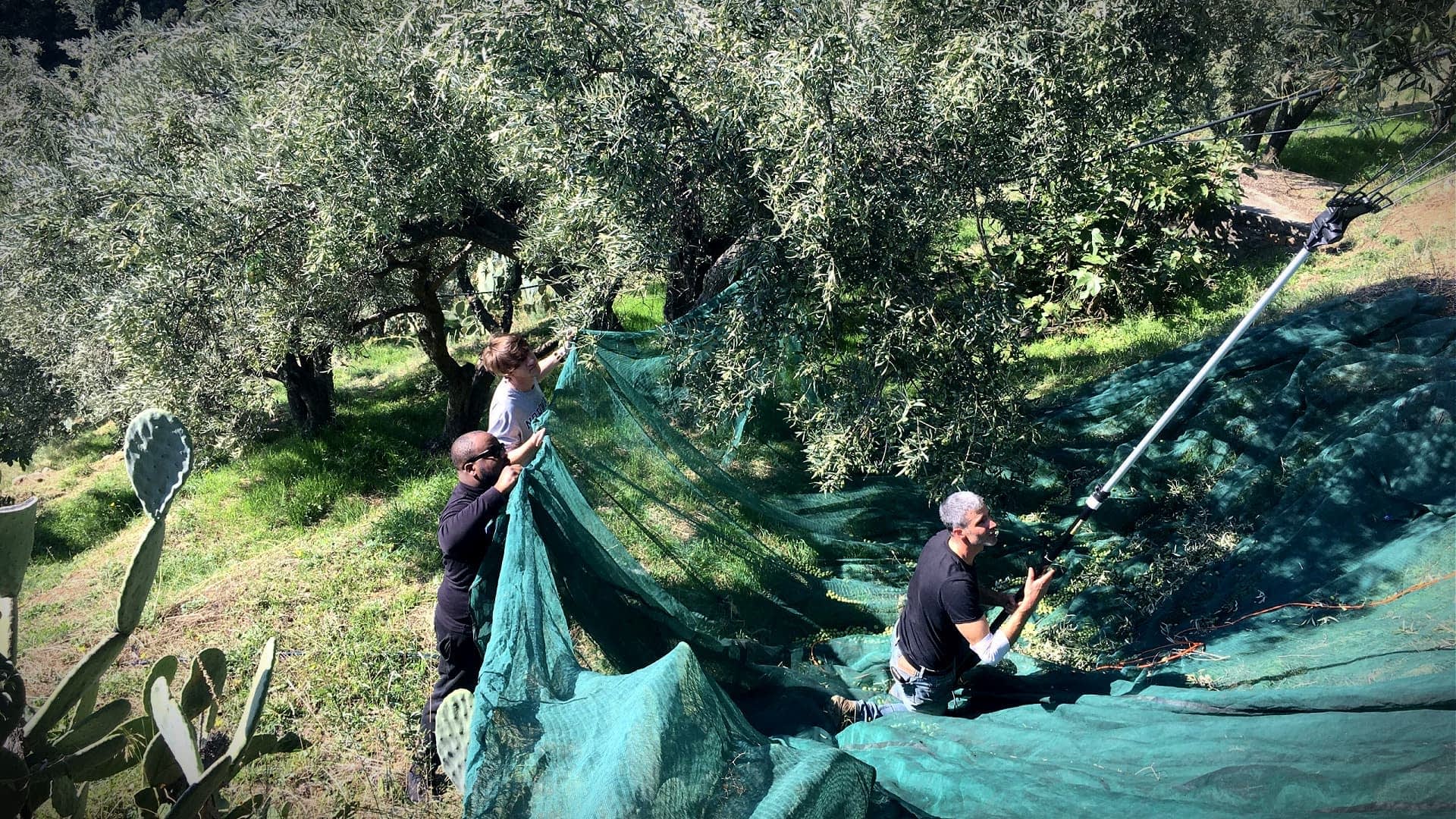
Harvesting olives in Enotre’s hilly groves in Calabria, Italy
Pollizzi’s olive groves are located in the heart of Calabria, the southwesternmost portion of the Italian peninsula and the country’s second-largest olive oil-producing region. The groves sit in the foothills between La Sila, a mountainous plateau, and the Ionian Sea.
The olive trees benefit from the Mediterranean breeze and favorable soil, which has been home to olives for almost three millennia. And there, Pollizzi is experimenting with many different cultivars.
In the last eight years, he took charge of the orchards that belonged to his family and launched his current venture. The farm is named after the ancient Enotri people, a population believed to have come from Greece. They settled in the area in the 13th Century BCE and thrived there for at least six centuries.
“Since we started this new adventure, we began experimenting to identify the varieties that might benefit the most from this unique location,” Pollizzi said.
Among his almost 800 olive trees, Pollizzi grows many well-known Italian cultivars, such as Leccio del Corno, Nostrana di Brisighella, Nocellara del Belice and Grignano, a common variety in northern Italy.
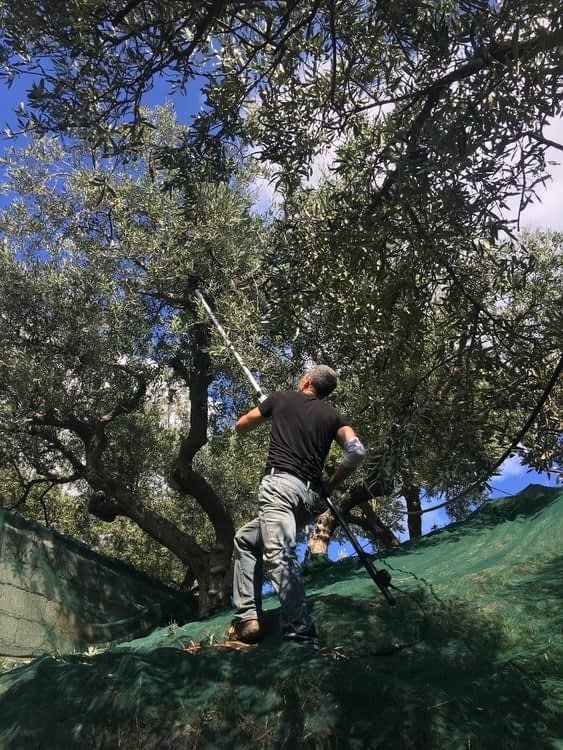
Pollizzi exeriments with traditional and non-traditional olive cultivation in his groves in Calabria.
“I also started experimenting with Itrana,” Pollizzi said, referring to a cultivar originally from central Italy, whose popularity among olive farmers has grown substantially in recent years.
“The Itrana trees are adapting to our region marvelously and convey that special tomato flavor, be it the leaf of green tomato or the mature flavor of the ripened tomato,” he added.
“I am very passionate about discovering how these cultivars may settle in Calabria. Of course, I also focus on cultivars that are locally more common, such as Ottobratica, Cassanese, Carolea and Coratina,” he continued.
Several courses and new experiences have allowed Pollizzi to evolve the olive oil tradition of his ancestors. “First lesson I learned is that quality does not come overnight,” he said. “It requires dedication, knowledge and passion. It also requires equipment, time and fatigue.”
To better maintain the soil in Calabria, Pollizzi introduced terracing with slopes usually associated with the Tuscan farming tradition.
“We made those Cyclopean walls,” he said. “They are not only beautiful, but they also exert a draining effect, as they maintain the terraces’ soil firm and allow water to flow down without causing damage.”
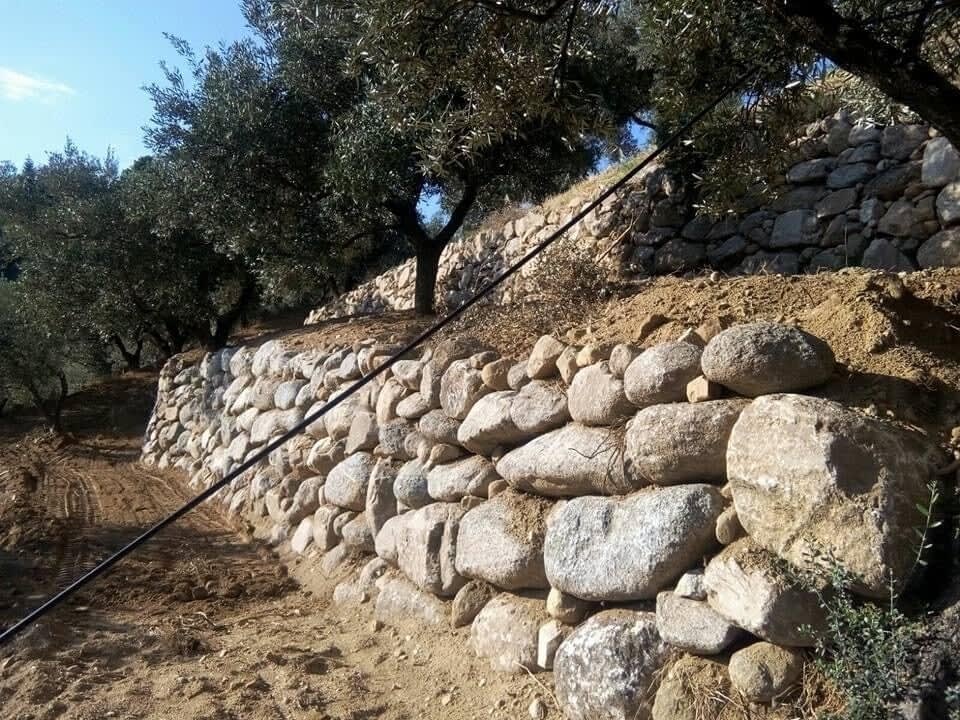
Cyclopean walls
Pollizzi’s passion for olive farming blossomed a couple of decades ago after he began caring for more than 600 trees on the opposite end of Italy, in the northern Veneto region.
“Sometimes, the owners of those orchards do not have the time or the means to care for them. And I do not mind the work,” he said.
“In those olive groves, you can find the local Marzemino cultivar and others, such as Lecce del Corno, Frantoio, Leccino, Pendolino and even Coratina. They produce entirely different kinds of blends,” he remarked.
The whole of Enotre’s production in Calabria is organic-certified. “In Veneto, we are not certified at the moment, but we apply that same approach,” he said.
Pollizzi explained how organic olive growing might mean higher production costs than conventional farming. Still, such a choice corresponds with the farmer’s approach to nature.
“Some truly believe that having an organic orchard means not doing anything to the grove,” he said. “On the contrary, it means putting in place practices that are compatible with nature and the surrounding environment and with the trees.”
While the trees in Calabria enjoy mild winds and dry conditions unfavorable to pests such as the olive fruit fly, in Veneto, conditions are quite different.
“I can say that the organic approach is easier in Calabria, as in Veneto, temperatures are different, and even if the trees sit on the hills, they still feel the humidity of the Po Valley,” Pollizzi said. “That means that the olive fruit fly and the fungi infections tend to be more present.”
Even in Calabria, though, challenges abound. “With all the rainfall we had, you cannot abstain from helping the trees with organic compatible treatments such as copper-based treatments or bacillus thuringensis [a common bacterium used in organic agriculture worldwide],” Pollizzi said.
“In our area, you can bet diseases such as the peacock spot will be common,” he added. “You will see olive moths, bark beetles or otiorhynchus weevils.”
Catching on with the latest trends and building on its historical context, Enotre is also opening up to oleotourism, with tastings among the olive trees and nature walks.
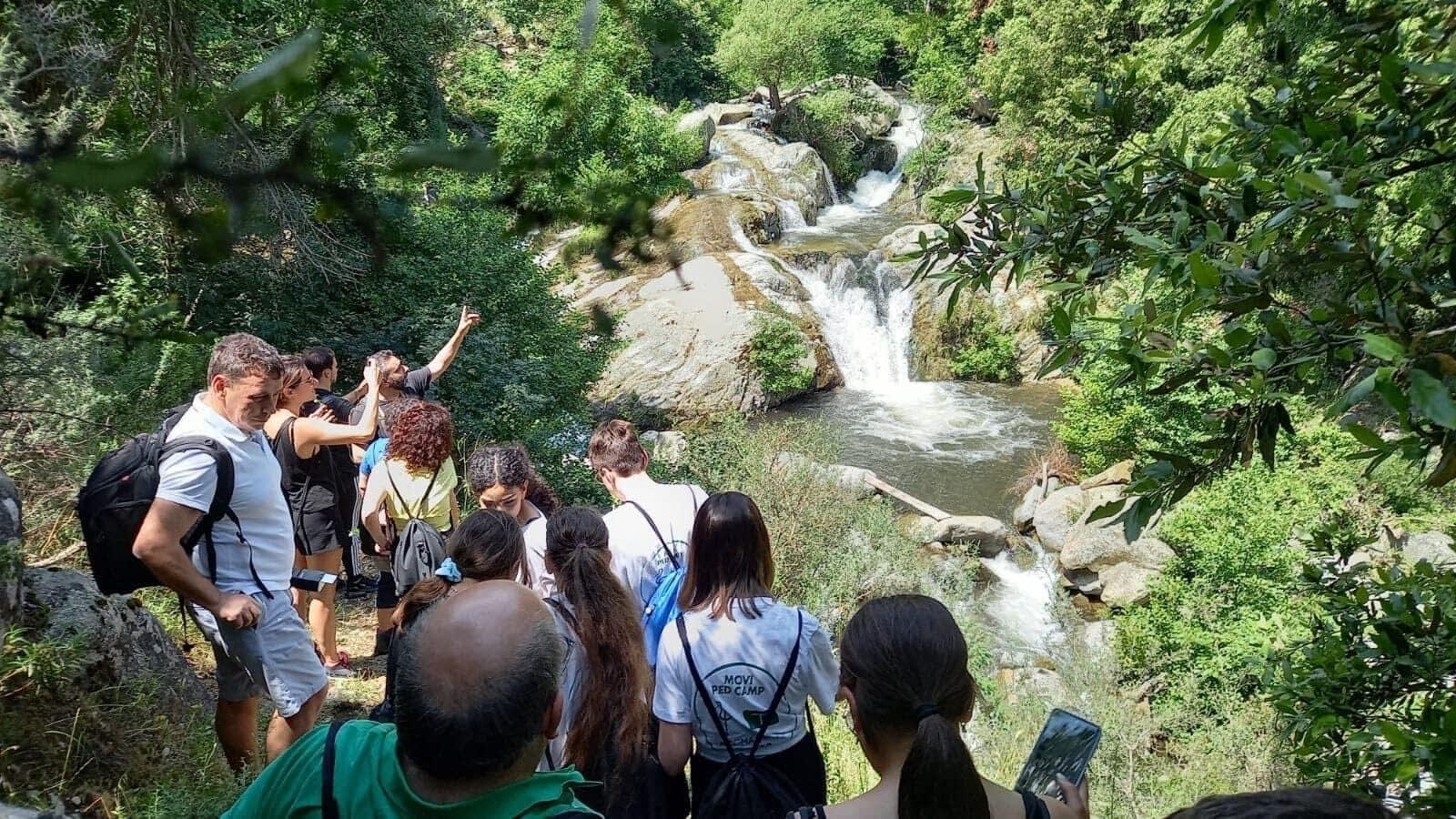
Pollizzi hosts a walk in the scenic Vergari River Reserve.
“Our olive orchards are part of one of the walks in the Vergari River Reserve, a beautiful location that attracts up to 30,000 tourists a year,” said Pollizzi.
“I was one of the supporters of this project since the beginning,” he added. “Tourists go through Enotre’s orchards, walking among the olive trees, and reach a nearby monastery. The reserve is part of the Cammino Basiliano,” Pollizzi said, referring to the 1,500-kilometer network of historical and nature trails inspired by Saint Basil’s life.
“The walk is now known as the Enotri walk,” he concluded. “Tourists in October will be able to experiment with the olive harvest and visit highly relevant locations in the vicinities, such as Tropea. It will be a hands-on food experience and a way to get in contact with local culture.”




